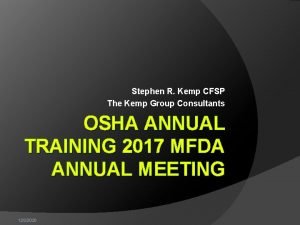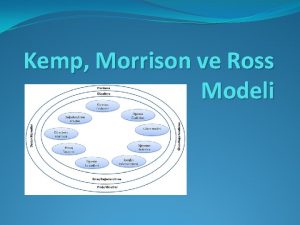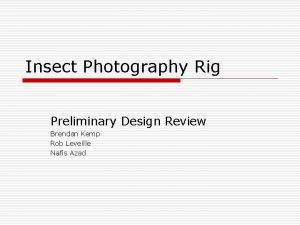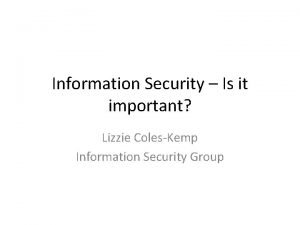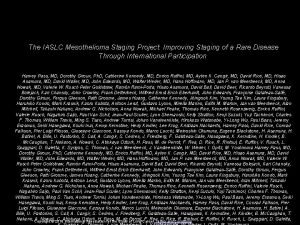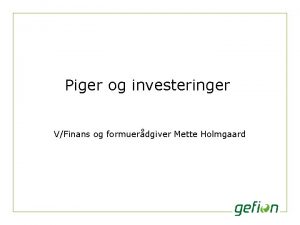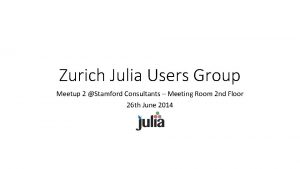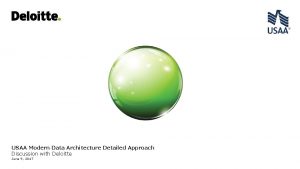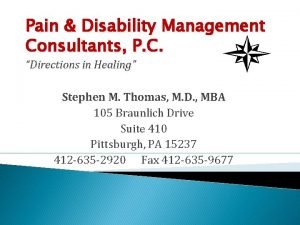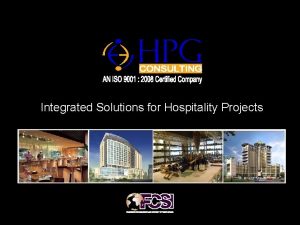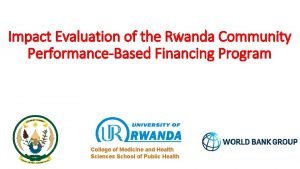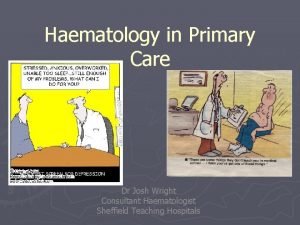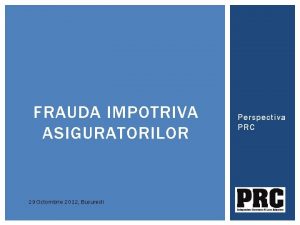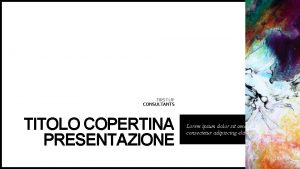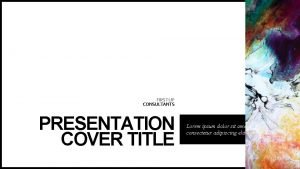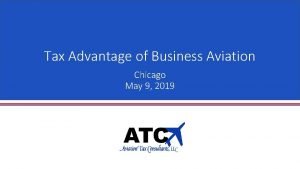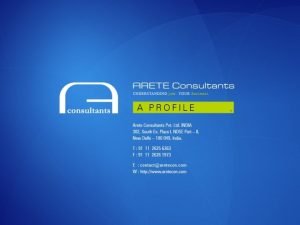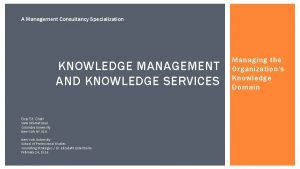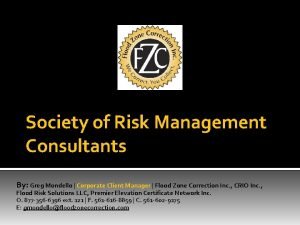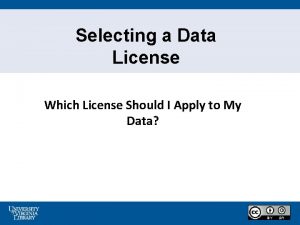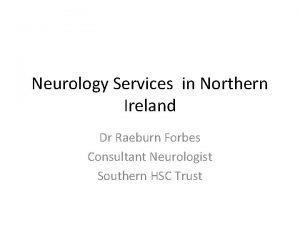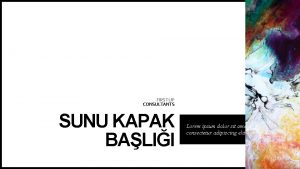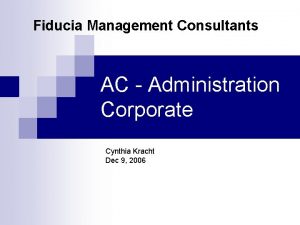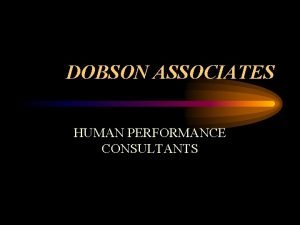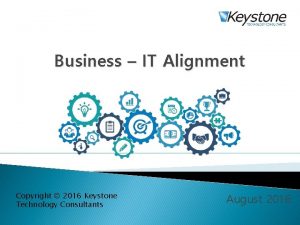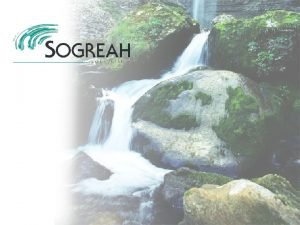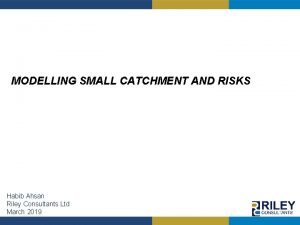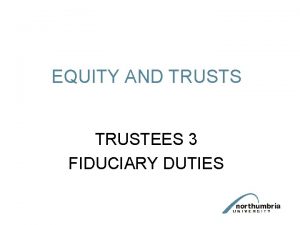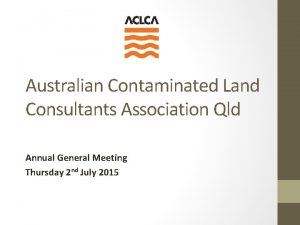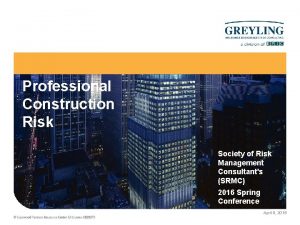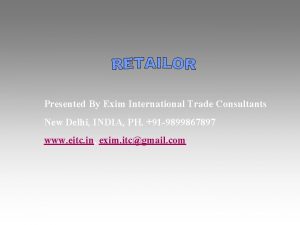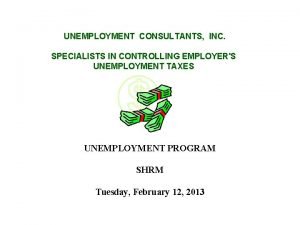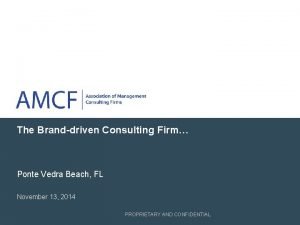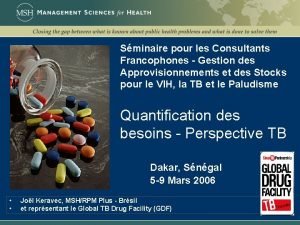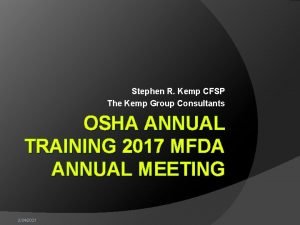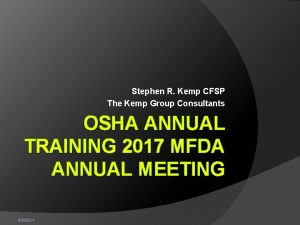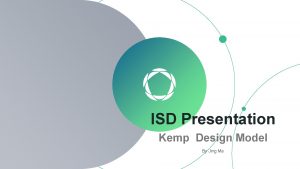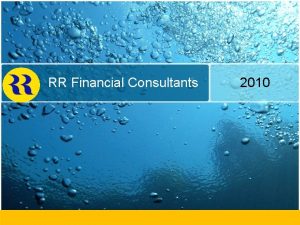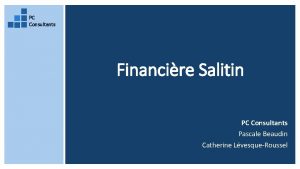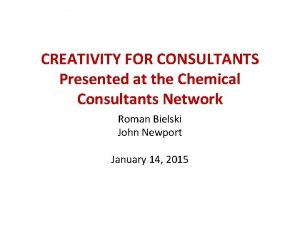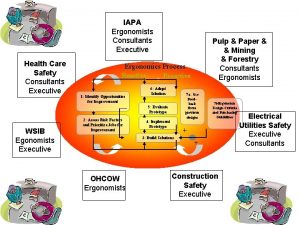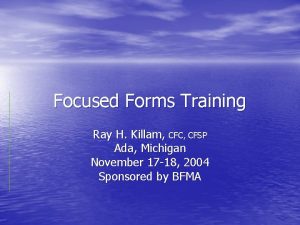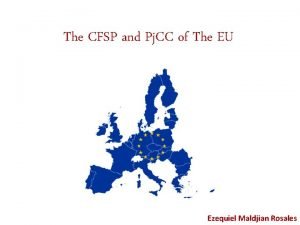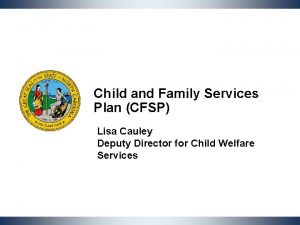Stephen R Kemp CFSP The Kemp Group Consultants



































































































- Slides: 99

Stephen R. Kemp CFSP The Kemp Group Consultants OSHA ANNUAL TRAINING 2017 MFDA ANNUAL MEETING 12/2/2020

Final Rule of Recordkeeping of Workplace Injuries Global Harmonized System Labeling and MSDS/SDS NEW UPDATES FOR 2017 12/2/2020

OSHA: Occupational Safety and Health Administration � Part of The Department of Labor � Created in 1971 � Some states have own program � Strong Enforcement � Specialized Training in various fields �Construction �Disaster response teams 12/2/2020

States with OSHA Approved Plans Note: Red Covers Public Sector Employment Only 12/2/2020 Alaska Arizona California Connecticut Hawaii Indiana Iowa Kentucky Maryland Michigan Minnesota Nevada New Jersey New Mexico New York North Carolina Oregon Puerto Rico South Carolina Tennessee Utah Vermont Virgin Islands Virginia Washington Wyoming

Globally Harmonized System of Classification and Labeling HAZARD COMMUNICATION STANDARD 12/2/2020

Agenda Overview of changes to the MIOSHA Part 42, 92 and 430 (OSHA 1900: 1200): Hazard Communication Standard (Haz Com) Labeling requirements Safety Data Sheets (SDS) format – 16 sections Supplemental Employee Training (to be provided by employer)

Newer Requirements � Product Identifier � Signal Word � Pictogram � Hazard Statements � Precautionary Statements � Name, Address and phone of chemical manufacturer etc. 12/2/2020

Supplemental Employee Training Details of the facility specific hazard communication program: �Location and availability of written program and SDSs �Physical hazards, health hazards and hazards not otherwise classified (HNOC) of the chemicals in the work area �Chemical list, location and use of hazardous chemicals �Secondary container labeling system �Specific procedures to protect employees from the chemical hazards �Methods used to detect the presence or release of hazardous chemicals (sensor alarms, odors, visual other monitoring devices)

New Standard Changes GHS and HCS 2003 UN initiated Global System of classification of Labeling of chemicals � Major Changes of hazard classifications � Labels Harmonized signal word or pictogram � MSDS 16 section format Change to SDS � Information and training requirements within two years � All employers must have hazardous chemicals training � 12/2/2020

New Rules! Signage Change MIOSHA Part 306 OSHA # 1910. 1048 12/2/2020 Formaldehyde Regulated Areas DANGER FORMALDEHYDE IRRITANT AND MAY CAUSE POTENTIAL CANCER HAZARD CAUSES SKIN, EYE, AUTHORIZED AND RESPIRATORY PERSONNEL ONLY IRRITATION AUTHORIZED PERSONNEL ONLY DANGER Storage Areas FORMALDEHYDEDANGER for CONTAMINATED FORMALDEHYDEContaminated [CLOTHING] CONTAMINATED Clothing and EQUIPMENT [CLOTHING] Equipment AVOID INHALATION EQUIPMENT AND SKIN CONTACT DO NOT BREATHE VAPOR DO NOT GET ON SKIN

Who is Affected? � Manufacturers, Distributors, Importers �Change SDS information and format �Change container labeling � Employers Training employees on changes to: �SDS (change from MSDS to SDS and 16 -section format) �Container Labels (including secondary containers) � Employees Recognize and understand hazards based on: �Information in new SDS format �Pictograms on container labels �Precautionary and hazard statements

Why the Change to Haz Com? To align with the Globally Harmonized System of Classification and Labeling of Chemicals (GHS) adopted by 67 nations � To provide a common and coherent approach to classifying chemicals • Reduce confusion and increase understanding of the hazards • Facilitate training • Help address literacy problems �

Supplemental Employee Training Details of the facility specific hazard communication program: �Location and availability of written program and SDSs �Physical hazards, health hazards and hazards not otherwise classified (HNOC) of the chemicals in the work area �Chemical list, location and use of hazardous chemicals �Secondary container labeling system �Specific procedures to protect employees from the chemical hazards �Methods used to detect the presence or release of hazardous chemicals (sensor alarms, odors, visual other monitoring devices)

Health Hazard Carcinogen Mutagenicity Reproductive Toxicity Respiratory Sensitizer Target Organ Toxicity Aspiration Toxicity 12/2/2020

Flammability Et. OH, CH 3 COH 3 CH 3 NO 2, CH 3 OH Self-Heating Emits Flammable Gas Self- Reactive Organic Peroxides 12/2/2020

Exclamation Mark Irritant Skin Sensitizer Acute Toxicity Narcotic Effects Respiratory Tract Irritants Hazardous to Ozone Layer 12/2/2020

Compressed Gas liquid Cold Gas Dissolved Gases Under Pressure 12/2/2020

Corrosion Strong Acid/Base corrosion/burn Corrosive to Metal 12/2/2020

Exploding Bomb Explosives Self- Reactives Organic Peroxides 12/2/2020

Global Harmonized System Effective Completion Date Requirement(s) Who December 1, 2013 Train employees on the new label elements and safety data sheet (SDS) format. Employers June 1, 2015* December 1, 2015 Compliance with all modified provisions of this final rule, except: The Distributor shall not ship containers labeled by the chemical manufacturer or importer unless it is a GHS label Chemical manufacturers, importers, distributors and employers June 1, 2016 Update alternative workplace labeling and hazard communication program as necessary, and provide additional employee training for newly identified physical or health hazards. Employers Transition Period to the effective completion dates noted above May comply with either 29 CFR 1910. 1200 (the final standard), or the current standard, or both Chemical manufacturers, importers, distributors, and employers 12/2/2020

Who is Not Covered? � Self-Employed Persons with no employees � Farms with only immediate family members of the employer’s family. � Work places already protected by other federal agencies under other federal statues ( i. e. armed forces) 12/2/2020

Hazard Communication Standard � “Right-to-Know” � Requires identification, definition of chemicals � Labeling with pertinent information sources � ‘Trade Secrets’ definitions � Employer Compliance � DOT placard marking compliance 12/2/2020

Transport "Pictograms" Flammable Liquid Flammable Gas Flammable Aerosol Flammable solid Self-Reactive Substances Pyrophorics (Spontaneously Combustible) Self-Heating Substances, which in contact with water, emit flammable gases (Dangerous When Wet) Oxidizing Gases Oxidizing Liquids Oxidizing Solids Explosive Divisions 1. 1, 1. 2, 1. 3 Explosive Division 1. 4 Explosive Division 1. 5 Compressed Gases Explosive Division 1. 6 Acute Toxicity (Poison): Oral, Dermal, Corrosive Inhalation Marine Pollutant Organic Peroxides

DOT Placards 12/2/2020

Revised Posters – MSDS to SDS

Checklist for Hazard Communication Standard (HCS) Obtain copy of Rule Read and Understand the requirements � Assigned responsibility for tasks � Prepare inventory of Chemicals � Show and Explain MSDS/SDS � MSDS/SDS sheets for each chemical � Conduct training � Maintain Program � Establish procedures to evaluate effectiveness. � � 12/2/2020

Material Safety Data Sheet � Safety Information and First Aid � Fire/Explosion Data � Physical/ Hazardous Ingredients 12/2/2020

Safety Data Sheets- 16 Sections Identification Hazard(s) Identification Composition/info ingredients First-Aid Measures Fire-Fighting Measures Accidental release Measures Handling and Storage 12/2/2020 Exposure Controls/PPE Physical/Chemical Properties Stability/Reactivity Toxicological Info Ecological Info Disposal Considerations Transport information Regulatory information Other/ date of prep

Labels: Signal Word These are words used to indicate the severity of the hazard and alert employees to the potential hazard. Only 2 signal words will appear: �“DANGER”(more severe hazard) �“WARNING” (less severe hazard) Not all labels will have a signal word. Some chemicals are not hazardous enough to require that a signal word appear on the label.

Hazard Communication � General Duty Clause �General Hazard Issues � Formaldehyde Exposure Rule �Respiratory Protection Program �New Assigned Protection Factors � Bloodborne Pathogen Rule � Recordkeeping Rules ( New Revisions 2017) 12/2/2020

OCCUPATIONAL SAFETY AND HEALTH ACT In a Nutshell 5 (a) General Duty Clause: “Each employer shall furnish to each of his employees employment which is free from recognized hazards that are causing or likely to cause death or serious physical harm to his/her employees. ” 12/2/2020

Major OSHA Standards � General Duty Clause � Formaldehyde 1910: 1048 � Hazardous Communications 1910: 1200 and “Right to Know” � Bloodborne Pathogens 12/2/2020

General Duty Clause � Hazard Communication � Walking/Working Surfaces/Floor loads � Guarding Floor and Wall openings � Ladders Fixed or Portable � Emergency Action Plans � Fire Safety � Hazardous Materials � Electrical Equipment � Workplace Violence � Emergency response 12/2/2020

Floor Lift Labeling 12/2/2020

Emergency Shower 12/2/2020

Disconnect for 220 V A/C 12/2/2020

Electrical Panel Signage 12/2/2020

Lock Out Example 12/2/2020

Hydraulic Lift with 600 lb limit 12/2/2020

General Use Ladders 12/2/2020

Trip Hazard on ADA Ramp 12/2/2020

General Duty Clause Continued � General Environmental Controls � Fire Prevention Plans � Hazardous Wastes and Materials/ Operations � Means of egress � Noise exposure � Personal protective equipment � Confined Spaces � Electrical Equipment 12/2/2020

Air Condition Condenser Guards Lockout/Tagout Over fans and moving parts 12/2/2020

Light Guards on low ceilings General Duty Clause Over Flourescent Lights covers 12/2/2020

Confined Space 12/2/2020

Backflow preventer with ventilation Backflow preventer New regulations 12/2/2020

Recordkeeping requirements Fatalities or hospitalization of three or more employees reported within eight hours � Updates in Log Forms/ Immediate online reporting New July 2017 � Defines work related injuries better � Requires annual summary posted for three months instead of one month � Funeral Service exempt SIC 7261 � Less than ten employees exempt � 12/2/2020

Manual and Locations 12/2/2020

Guidelines of OSHA Recordkeeping Rule Updates three recordkeeping forms Requires significant degree of aggravation before a preexisting injury or illness is considered work related. � Requires reporting of needle sticks and sharps injuries from another person’s blood or OPIM � Privacy is protected in reports � Annual summary must be posted for three months instead of one month � � 12/2/2020

OSHA FORMS 300, 300 A, 301 12/2/2020

Formaldehyde Exposure Rule 1910: 1048 MIOSHA 306 Formaldehyde Exposure Rule Permissible Exposure Limit (PEL) 0. 75 ppm/8 hours/TWA 2 PPM 15 min/STEL Action Level 0. 5 ppm 12/2/2020

Initial Monitoring � Production Change � Equipment Change � Process � Personnel � Control Measures 12/2/2020

Formaldehyde Exposure Rule At or Above Action Level 0. 5 ppm � Repeat test once at six months � Continue Control Measures to reduce Levels � Notify employee within 15 days of results � Tests must be 95% confidence level � Retest under worst conditions yearly 12/2/2020

Formaldehyde Rule Regulated Areas � Develop written plan to reduce exposure and give to employees � Establish regulated area with sign � Work Practice Controls � Respiratory Control Standard � Personal Protective Equipment Required 12/2/2020

Formaldehyde Exposure Rule Personal Protective Equipment � Must be impervious � Labeling with caution statements � Change rooms required and Showers � Housekeeping Plan � Medical surveillance Program � Hazard warning Labels 12/2/2020 7

Storage of HCHO Cubes of HCHO 12/2/2020 Bottles/

Formaldehyde Exposure Rule Regulated Area Sign 12/2/2020

Formaldehyde Rule � Must retain records � Exposure records 30 years � Medical Record retention is duration of employment plus 30 years 12/2/2020

Respiratory Standard Rule � Assigned Protection Factors (APFs) � 23 August 2006 � Indicates level of workplace respiratory protection based upon exposure limit of a contaminant. � 0. 75 ppm (PEL)/ 8 hr TWA and/or 2. 0 ppm (STEL) 15 minutes 12/2/2020

Respiratory Standard Continued Respiratory Hazard Evaluation � Determine if at Risk � Make special Plan for Spills � POST SIGN WITH HCHO HAZARD SPILL � Use only NIOSH Approved Respirators � Fit testing, medical questionnaire � Try to avoid due to complex compliance � 12/2/2020

Gas Mask with filter 12/2/2020

Bloodborne Pathogen Rule 1910: 1030 � Protection against bloodborne pathogenic organisms and OPIM � Bloodborne Diseases �HIV �HBV, HCV, HDV �Streptococcus, Staphylococcus, bacterial etc 12/2/2020

Revision Bloodborne Pathogen Rule Annual Review of Exposure Control Plan Sharps injury Log Emphasizes relevant evidence to ensure effectiveness of devices Employee Input (in exposure control plan) 12/2/2020 Engineering Controls and sharps injury protections. Training and Education Needlestick Safety and Prevention Act

Proper PPE Storage 12/2/2020

Written Exposure Control Plan � Exposure Determination � Schedule and Methods of Implementation � Summary of training Program � Procedures for evaluation of Exposure incidents � Task Specific SOP 12/2/2020

Disposable scalpels with safety features Retracted position Protracted position 12/2/2020 Protracted position

Sharps Container 12/2/2020

Contact Dermatitis 12/2/2020

Definitions Contaminated Sharps: contaminated object that can penetrate the skin, including: �Needles �Scalpels �Broken glass �Trocars �Exposed ends of dental wires

Methods of Compliance Personal Protective Equipment (PPE) PPE is appropriate only if it does not permit blood/OPIM to pass through to or reach the employee’s clothing, skin, eyes, mouth, or other mucous membranes under normal use � Gloves ○ Latex, non-latex ○ NIOSH Alert on Preventing Allergic Reactions to Latex – http: //www. cdc. gov/niosh/ latexalt. html ○ Powder free/hypoallergenic � Gowns, aprons, fluid-resistant clothing � Face shields, eye protection (safety glasses, goggles) � Surgical Mask/N 95 respirator � Surgical caps, shoe covers 12/2/2020

Tyvek Suit with cuffs Impervious With hood or without 12/2/2020

Solicitation of Input from Non-Managerial Employees Identification, evaluation, and selection of engineering and work practice controls, including safer medical devices Must select employees who are: Responsible for direct remains care Representative of potential workplace exposure situations 12/2/2020 Must document employee input in ECP

“Chain of Infection” Pathogen Reservoir Escape from Reservoir Transmission through Environment Portal of Entry Susceptible host Infection Control = Break any link in chain 12/2/2020

Hypodermic syringes with “Self-Sheathing” safety feature Self-sheathed protected position 12/2/2020

“Add-on” safety feature Attached to syringe needle Attached to blood tube holder 12/2/2020

Other Potentially Infectious Materials (OPIM) � Human body Fluids � Cerebrospinal fluid � Pleural Fluid � Peritoneal Fluid � Amniotic Fluid � Saliva � Unfixed Tissue 12/2/2020

Bloodborne Pathogen Continued � Exposure Control Plan �must be accessible �reviewed and updated annually �exposure determination �methods of compliance , i. e. universal precautions �Work practice controls 12/2/2020

Methods of Compliance Housekeeping: Sharps Disposal Never place sharps into the regular trash � Use a leak-proof, puncture-resistant sharps container labeled with the biohazard symbol � Keep sharps container upright, readily available in the work area � Do not overfill - dispose of sharps container as biohazard waste when it is 2/3 full � 12/2/2020

Personal Protective Equipment � Employer’s Responsibility � Must enforce � Cleaning and Schedule � Repair and Replace � Gloves �Disposable Latex � Use Nitrile if using Glutaraldehyde or allergies 12/2/2020

Housekeeping and Health Issues 12/2/2020 Clean and Sanitary Surfaces Protective coverings bins and pails glassware Sharps container Laundry Labeling Sink and eyewash facility Training Hep B vaccination post -exposure follow-up

Training Records � Date performed with contents � Training records for 3 years � Confidentiality Clause � Medical Records 30 years plus term of employment. 12/2/2020

Hazard Communication Act � “Right to Know” MIOSHA Law � Hazard Determination � Labeling � Material Safety Data Sheets (MSDS) � Employee Information and training 12/2/2020

12/2/2020

Methods of Compliance Housekeeping: Decontamination Work surfaces should be decontaminated with an appropriate disinfectant such as 10% bleach solution or an EPA approved disinfectant after completion of procedures, immediately or as soon as feasible when surfaces are overtly contaminated or after any spill, and at the end of the work shift 12/2/2020

Violations: Willful � Willful: Violation in which the employer either knowingly failed to comply with a legal requirement or acted with plain indifference to employee safety. 12/2/2020

Serious � Exists when the workplace hazard could cause an accident or illness that would most likely result in death or serious physical harm, unless the employer did not know or could not have known of the violation. 12/2/2020

Repeated �A federal Agency may be cited for a repeated violation if the agency has been cited previously for the same or a substantially similar condition and, for a serious violation, OSHA’s region wide inspection history for the agency lists previous OSHA notice issued within the previous 3 years. 12/2/2020

Other- than- Serious � A violation that has a direct relationship to job safety and health, but is not serious in nature, is classified as “other-than-serious. 12/2/2020

Inspections � Be polite � Know your rights � Consult with an attorney is you suspect it is serious � Get violations in writing � Follow through on violations � Don’t retaliate! 12/2/2020

Common violations for Funeral Homes � Bloodborne Pathogen � Formaldehyde � Hazard Communication � Sanitation � Respiratory Protection � General requirements � www. osha. gov/pls/citedstandard. sic 12/2/2020

Disinfection Parameters � Previous Cleaning � Organic Load � Type and Level of Microbial Contamination � Exposure Time � Physical Configuration � Temperature � p. H 12/2/2020

Use of Isopropyl Alcohol Hand wash � Rapidly bactericidal, Virucidal, Fungicidal � Not sporicidal � Not effective against hydrophilic Viruses �Echo viruses (Enteric Cytopathic Human Orphan) �Coxsackie viruses (polio, Enterviridae) 12/2/2020

Glutaraldehyde Standards � Suggested level of 0. 20 ppm (ACGIH) � Can be cited under General Duty Clause � Spills deactivated with Sodium Bisulfite � Use Nitrile or Butyl Rubber gloves 12/2/2020

Emerging and Re Emerging Pathogens MRSA/VRSA MERS Hep C and E VRE Mumps Enterovirus C Difficile 12/2/2020

Why we Lose the battle 12/2/2020

96 Product Features BROAD-SPECTRUM SANITIZING: (30 sec. at 20°C) Pseudomonas aeruginosa (ATCC 15442), Staphylococcus aureus (ATCC 6538), Salmonella choleraesuis (ATCC 10708), Staphylococcus aureus (ATCC 27247, Gentamycin and Methicillin resistant, MRSA), Enterococcus faecalis (ATCC 51299, Vancomycin resistant, VRE), Acinetobacter baumanii TUBERCULOCIDAL (5 min. at 20°C) Mycobacterium terrae (ATCC 15755) GENERAL VIRUCIDE (5 min. at 20°C) Proven effectiveness against the Polio Virus, Sabin strain type 1 (ATCCVR-192) allows for a General Virucide claim against most enveloped and non-enveloped viruses. Human Immunodeficiency Virus, HIV BACTERICIDAL (5 min. at 20°C) Pseudomonas aeruginosa (ATCC 15442) Staphylococcus aureus (ATCC 6538) Salmonella choleraesuis (ATCC 10708) FUNGICIDAL (5 min. at 20°C) Trychophyton mentagrophytes (ATCC 9533) 12/2/2020 Synergy Center | 5988 Mid Rivers Mall Dr. | St. Charles, MO 63304

97 Synergy Center | 5988 Mid Rivers Mall Dr. | St. Charles, MO 63304 Benefits of Sporicidin® � FDA 510(k) cleared for sterilization of hospital instruments and equipment � OSHA compliance with Bloodborne Pathogens Standard (29 CFR 1910. 1030) � Non-corrosive to instruments and equipment including endoscopes, dental and surgical instruments, plastics, latex, vinyl, glass, metal and glazed porcelain � Provides 100% kill of disease and odor causing organisms. It is fungicidal, bactericidal, virucidal and tuburculocidal � Lowest level of Glutaraldehyde (1%) accepted by FDA to achieve sterilization � High level disinfection in 20 minutes at 25º C - 12 day max. reuse* � Complete sterilization in 12 hours @ 25º C - 12 day max. reuse* � Alcohol free, safe for equipment** � Will not cloud lenses or clog air/water channels � Non-staining, non-flammable and non-abrasive � No special shipping or disposal restrictions 12/2/2020

98 Personal Protective Equipment & Infection Control Products Introducing ACCEL TB® Sporiciden Synergy Center | 5988 Mid Rivers Mall Dr. | St. Charles, MO 63304 Office 636. 928. 2800 | Fax 636. 441. 6881 12/2/2020 ACCEL TB Sporiciden • Intermediate Level Disinfectant • Sterilant

Conclusion � Flexibility, Feasibility, and Clarity � Common Sense Objectives � Treat employees Fairly � Be proactive 12/2/2020
 The kemp group
The kemp group Jerrold kemp
Jerrold kemp Kemp morrison ve ross modeli
Kemp morrison ve ross modeli Brendan kemp
Brendan kemp Ida
Ida Dr heike neumeister-kemp
Dr heike neumeister-kemp Chris c. kemp
Chris c. kemp Lizzie coles-kemp
Lizzie coles-kemp Kemp kernstine md mesothelioma
Kemp kernstine md mesothelioma Therese kemp
Therese kemp Morrison ross kemp model
Morrison ross kemp model Jerrold kemp
Jerrold kemp Cathryn kemp
Cathryn kemp Kemp's instructional design model
Kemp's instructional design model Hát kết hợp bộ gõ cơ thể
Hát kết hợp bộ gõ cơ thể Slidetodoc
Slidetodoc Bổ thể
Bổ thể Tỉ lệ cơ thể trẻ em
Tỉ lệ cơ thể trẻ em Gấu đi như thế nào
Gấu đi như thế nào Tư thế worms-breton
Tư thế worms-breton Chúa yêu trần thế
Chúa yêu trần thế Môn thể thao bắt đầu bằng chữ đua
Môn thể thao bắt đầu bằng chữ đua Thế nào là hệ số cao nhất
Thế nào là hệ số cao nhất Các châu lục và đại dương trên thế giới
Các châu lục và đại dương trên thế giới Công của trọng lực
Công của trọng lực Trời xanh đây là của chúng ta thể thơ
Trời xanh đây là của chúng ta thể thơ Mật thư anh em như thể tay chân
Mật thư anh em như thể tay chân Phép trừ bù
Phép trừ bù Phản ứng thế ankan
Phản ứng thế ankan Các châu lục và đại dương trên thế giới
Các châu lục và đại dương trên thế giới Thơ thất ngôn tứ tuyệt đường luật
Thơ thất ngôn tứ tuyệt đường luật Quá trình desamine hóa có thể tạo ra
Quá trình desamine hóa có thể tạo ra Một số thể thơ truyền thống
Một số thể thơ truyền thống Cái miệng nó xinh thế
Cái miệng nó xinh thế Vẽ hình chiếu vuông góc của vật thể sau
Vẽ hình chiếu vuông góc của vật thể sau Nguyên nhân của sự mỏi cơ sinh 8
Nguyên nhân của sự mỏi cơ sinh 8 đặc điểm cơ thể của người tối cổ
đặc điểm cơ thể của người tối cổ Giọng cùng tên là
Giọng cùng tên là Vẽ hình chiếu đứng bằng cạnh của vật thể
Vẽ hình chiếu đứng bằng cạnh của vật thể Tia chieu sa te
Tia chieu sa te Thẻ vin
Thẻ vin đại từ thay thế
đại từ thay thế điện thế nghỉ
điện thế nghỉ Tư thế ngồi viết
Tư thế ngồi viết Diễn thế sinh thái là
Diễn thế sinh thái là Dot
Dot Số nguyên là gì
Số nguyên là gì Tư thế ngồi viết
Tư thế ngồi viết Lời thề hippocrates
Lời thề hippocrates Thiếu nhi thế giới liên hoan
Thiếu nhi thế giới liên hoan ưu thế lai là gì
ưu thế lai là gì Sự nuôi và dạy con của hươu
Sự nuôi và dạy con của hươu Khi nào hổ mẹ dạy hổ con săn mồi
Khi nào hổ mẹ dạy hổ con săn mồi Hệ hô hấp
Hệ hô hấp Từ ngữ thể hiện lòng nhân hậu
Từ ngữ thể hiện lòng nhân hậu Thế nào là mạng điện lắp đặt kiểu nổi
Thế nào là mạng điện lắp đặt kiểu nổi Stamford consultants
Stamford consultants Modern data architecture consultants
Modern data architecture consultants Church capital campaign consultants
Church capital campaign consultants Disability management consultants
Disability management consultants Kdms consultants
Kdms consultants Humuza consultants
Humuza consultants Dr nat wright
Dr nat wright Gvsu writing center
Gvsu writing center Pavalascu risk consultants
Pavalascu risk consultants First up consultants
First up consultants First up consultants
First up consultants Ecm leaders
Ecm leaders Daniel cheung aviation tax
Daniel cheung aviation tax Baringa case study
Baringa case study Nec consultants
Nec consultants Arete consultants pvt ltd
Arete consultants pvt ltd Consultant knowledge management
Consultant knowledge management Global marketing consultants
Global marketing consultants Society of risk management consultants
Society of risk management consultants Odc license consultants
Odc license consultants Protech consultants pvt ltd
Protech consultants pvt ltd Ulster hospital neurology consultants
Ulster hospital neurology consultants Hs consultants
Hs consultants Balii
Balii Fiducia management consultants
Fiducia management consultants Human performance consultants
Human performance consultants Business partner consultants limited
Business partner consultants limited Keystone technology consultants
Keystone technology consultants First up consultants
First up consultants Barking spider australia
Barking spider australia Sogreah consultants
Sogreah consultants Habib risk consultants
Habib risk consultants Rob hall adventure consultants
Rob hall adventure consultants Industrial development consultants v cooley
Industrial development consultants v cooley Australian contaminated land consultants association
Australian contaminated land consultants association First up consultants
First up consultants Oppi insurance
Oppi insurance Exim international trade consultants
Exim international trade consultants Omega plumbing
Omega plumbing Prairie cardiovascular consultants springfield il
Prairie cardiovascular consultants springfield il Sheep consultants
Sheep consultants Unemployment consultants
Unemployment consultants Management consultants in ponte vedra beach florida
Management consultants in ponte vedra beach florida Consultants francophones
Consultants francophones
